Q&A: Are Smartphone Cameras a Good Replacement for Digital Cameras?
Digital cameras appear to have become redundant for most people and are gathering dust in the cupboard as everyone uses their smartphone or cellphone built-in camera as its more convenient and always available. The camera quality has greatly improved on the iPhone and other popular cell phones, but is the quality good enough to bury the digital camera?
How Have Phone Camera Improved?
A few years ago, cellphone cameras only featured very primitive camera with a meager 1.3 magpies capacity. The photos produced were pixelated, low quality and poor contrast and lighting, and there were few controls. No one would have thought of dumping your regular digital camera for one of those 'toys'.But as smartphone makers, driven by healthy competition have improved the built-in cameras in leaps and bounds and offered much more sophisticated controls and software so that many manufactures claim that smartphones cameras can match and in some ways even outperform low-end conventional digital camera devices.

For example the HTC myTouch 4G Slide smartphone has a camera with an 8-megapixel capacity and many of the features and controls found on a conventional stand -alone digital camera. The in-built camera takes bright, sharp focused photos and is very easy to use.
The iPhone 4 5-megapixel camera, with optional High Dynamic Range (HDR) setting produces photos that are amazingly detailed and have high quality. Both offer digital focus and LED flash. The original iPhone lacked focus control, zoom, light level adjustment and a flash. The iPhone 3GS added extra features such as one-touch focus, but the iPhone 4 camera added a list of greatly improved features. You can even shoot self-portraits with the front camera.
Some of the improved features include:
iPhone Camera Zoom - The iPhone 4 camera can not only focus on any element of a picture when you tap it (you'll see a target-like box appear over the area you're tapped; that's where the camera will focus), you can also zoom in or out. The iPhone 4's camera features a 5x digital zoom. To zoom into a shot, press the volume up and down keys to zoom in or out of a picture. Alternatively, an on-screen zoom slider will appear if you tap anywhere on the display.
Light Control - The iPhone 4 features an illumination sensor to automatically sense if there’s enough light to take a photo or not, you can also manually switch it on by tapping on the flash icon that appears in the bottom left of the iPhone 4's screen in landscape mode, or top left in portrait mode. The iPhone camera is also very good at picking up the details of an image in low light.
IPhone Camera Flash - There are a few options for using the
flash:
=> Off - This is pretty self-explanatory, I think. And is the default
setting for the camera.
=> Auto - Tap the flash icon to reveal its options. Select "auto" if
you want the flash to be used only when needed, as
determined by the iPhone.
=> On - When you select this, the flash will be used with every
picture you take.
Using HDR Photos - HDR, or High Dynamic Range, photos take multiple exposures of the same scene and then combine them to create a better looking, more detailed image.
Shutter lag has been eliminated - On lots of older cellphone cameras, there was a lag between when you press the shutter button and when the camera actually takes a photo. Modern phones have "zero" shutter leg. The camera records continuously when the camera application is open and grabs the frame that corresponds with when you pressed the button.
Tap to focus - Autofocus keeps things sharp and the macro lens takes great close-ups. But you can also tap the iPhone display to focus on anything in the picture - a face in the background, for example - before you take the photo. Focusing also adjusts exposure and white balance automatically, so you get the best- quality photo possible.
Smartphone cameras includes facial recognition and smile-and- blink detection, as well as preset "scenes“ for doing such things as taking portraits or action shots.
What Features of Digital Cameras are Missing on Smartphone Cameras
- There's no optical zoom, because the lens of the phone camera is fixed and cannot move closer to the subject to change the focus. Cellphones only have the inferior digital zoom. Software simply magnifies what the camera sees to simulate changing the focus. The images made with digital zoom are not as sharp as with an with optical zoom. This especially applies or zooming in on far-away objects. Many digital camers have the ability to add a zoom lens for extra high quality zoom shots.
- You can't exchange lens and so the high quality macro and zoom lens are unavailable.
- Close-ups shots are not as good as the macro facility of digital cameras that involves moving the lens are not available.
How does the Quality Rate?
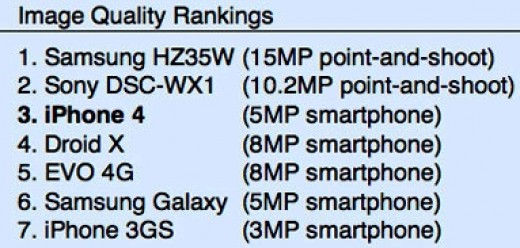
While you can easily find a cheap digital camera that can take higher-resolution photos than the smartphone the phones produce good quality images and they are so convenient. A Review by Macworld provides a summary of how in-built cameras compare.
The two point-and-shoot digital cameras used for the comparison came in first in their image quality tests. The next best camera was the iPhone 4 which as the best smartphone camera that they tested. Next best was the Droid X phone. This was followed by the EVO 4G, then followed the Samsung Galaxy, and last was the iPhone 3GS.
Despite coming third in overall quality the iPhone 4 provided the best depth of color and exposure scores of all cameras tested, including the digital stand-alone cameras. Sharpness and low- distortion were better with the digital cameras.
The review showed that megapixel count doesn't by itself meany better quality. The EVO 4G and Droid X both have 8-megapixel cameras, whereas the Phone 4 and the Samsung Galaxy have a 5-megapixel camera. As for the digital cameras, the Sony SDC-WX1 is a 10.2-megapixel camera and the Samsung HZ35W is a 12-megapixel camera. Software can offset a lower megapixel count to some extent.
What unique features are available on Smartphones but not on Digital Cameras
The power of the iPhone 4 camera is not its hardware specifications, but the software (Apps) behind it, both the default ones and the Pro apps that extend this capability.
=> Mobile: my iPhone 4 camera is ALWAYS with me, day and night, at school, at work, in the bus, in the metro. This means, I can take good quality pictures or HD Videos from whatever I want, wherever I am.=> Geolocation: An iPhone has always access to it’s CPS, even when you are abroad without internet access - the iPhone still records your coordinates.
=> Edit on the go: It can edit, adjust colors and crop pictures on the go. With the iPhone you don’t need other device to edit or even share your pictures. All is done directly from the iPhone itself.
=> Instant - This means now that a picture that has been just taken can be exposed to the world practically instantly. If you have a “normal" camera, you very probably have to go first to your computer, upload and run various applications to send the images out through the internet.
=> Apps - One of the best apps in the photography category is the Hipstamatic, which extends the default features. It allows you to swap films, lenses, as well as flash settings instantly. The Pro HDR makes the creation of great HDR photos a pleasure with the default settings, as it captures images exposed for shadows and another for highlights and then aligns it to produce 3 or 5 megapixel HDR photographs.
What about Video
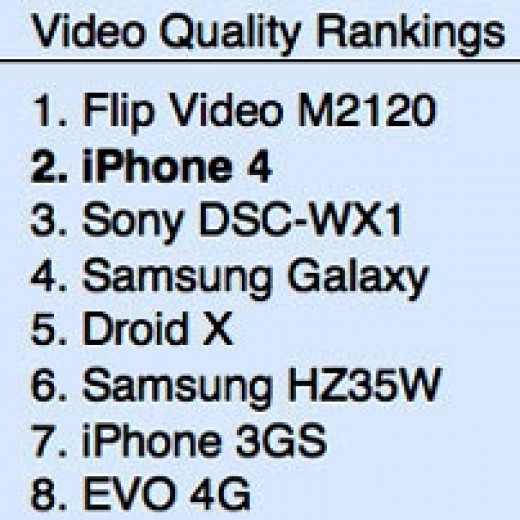
The iPhone front camera records 360p video and the better quality back camera records 720p HD video at 30 frames per second. While you are recording a video, you can turn the light off and on, and simply tap on the screen to alter the focus and switch from one subject to another. To zoom in you can double tap on the screen and your video will fill the entire screen. However the video is still being recorded at 1280 by 720 size.
The Review by Macworld found that the iPhone 4’s video capabilities were excellent. Only the Flip Video M2120 was superior to the iPhone for general quality for the 8 camera devices they tested. The Flip, which also records 720p video at 30 frames per second, had generally better video quality even in low-light. The Flip scored much higher for audio quality than all the smartphones.
What about Photo Storage, Memory and Battery Life
Most smartphones have adequate storage space for photos and most have excellent battery life.
Downloading and Transfers
Smartphones won hands down in terms of transferring photos directly to Flickr and Facebook via the internet and instant access cloud computing provides a huge resource for storing and accessing photo albums.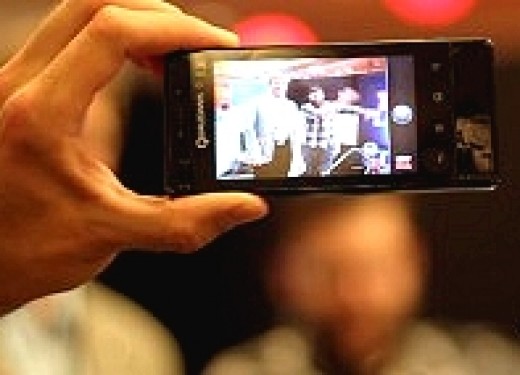
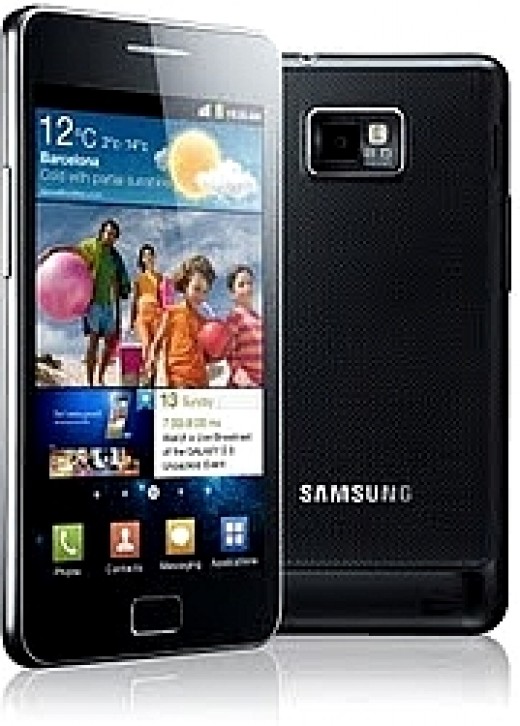
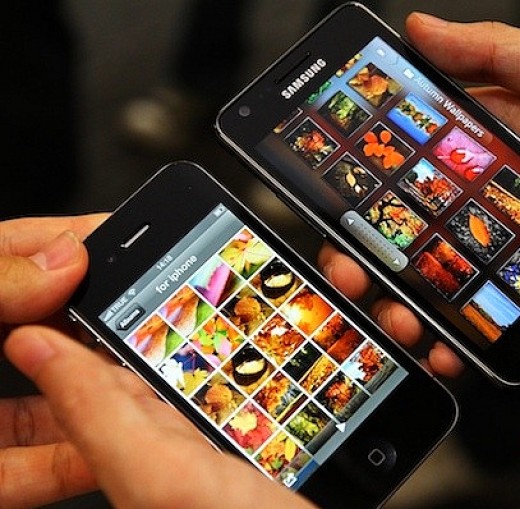
Conclusion
For general photographers, who take most of their photos for posting online, smartphones are a very capable replacement for the low end digital cameras. The smartphone's convenience (it’s always in your pocket), outstanding low-light capabilities, and access to instant apps for editing and sharing photos place it far ahead of the low range digital camera market.The iPhone 4’s wonderful video quality makes it an excellent alternative to a stand alone video camera.
For anyone serious about image or video quality then they may want the extra quality of the sand alone digital camera and video cameras.
Other things Smartphones replaces
Cnet conducted a survey of what other things people were using smartphones for that were effective replacements for other devices and applications. The results shown below show what percentage of those interviewed regarded the smartphone as a replacement.
Alarm clock: 61%
GPS: 52%
Digital camera: 44%
Personal planner: 42%
Landline phone: 40%
MP3 player: 38 %
Video camera: 34%
Newspaper: 28%
Radio: 27%
Desktop/Laptop computer: 24%
Gaming device: 21%
Books: 20%
Internet service at home: 19%
DVD player: 14%